NIL
Kirby Smart Shares Strong Opinion On Congress, And How Players Should Be Paid
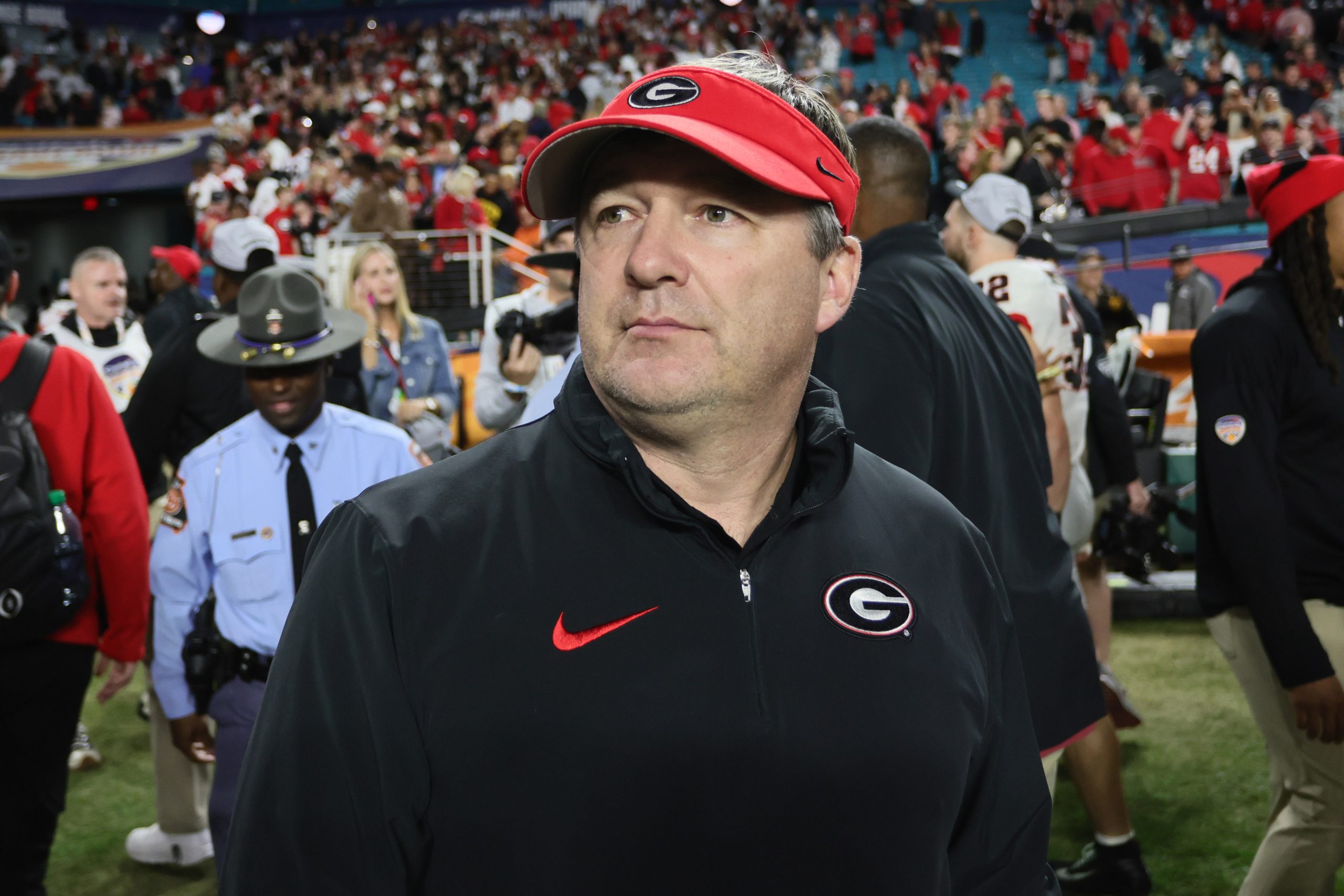
Kirby Smart has a plan for paying players through NIL, but it won’t go far without collective bargaining.
We could be days away from a judge in California approving the House settlement that will change college athletics once again. For Georgia’s Kirby Smart, his approach to NIL and how much players should make is pretty simple, at least in his eyes.
While commissioners and athletic directors continue to lobby for congressional help when it comes to the rules that will govern this new system, the problem is that we are so far down the road that it’s hard to turn the car around and fix certain problems.
One of those problems is where we are with NIL, and how this was never an endorsement situation. It was more so a pay-for-play arrangement under the disguise of finding deals for athletes when they enroll at a particular school.
In his eyes, Kirby Smart just wants what is fair for the older athletes that might have a name big enough to make money from a school, or is up on the pecking order that is actually benefits the roster as a whole when trying to decide on how much money each player is actually worth.
Charles Barkley Says Whether ‘Legal Or Illegal,’ He’s Done More For Auburn Than Other Athletes. Don’t Call Him
The problem is that the market is still fluctuating, with players signing for more money now than they did when NIL was first introduced. Also, with the pace at which Congress acts, the Georgia coach doesn’t see an easy solution on the horizon.
“Very little has happened. It just shows you how hard it is to make changes and correct things, probably when they’re needed, because … people have talked about Congress. That’s not easy. Not a lot gets done quickly there and where we are right now,” Kirby Smart said to Paul Finebaum. “Like, I think every coach agrees we’re in a good place with being able to compensate players. Call it pay for play, call it NIL, I don’t care what you call it.
“We’re all in a good place for that. We just want it to be in a way that’s sustainable. I just want to be able to have a freshman come in and not make more than a senior and I’d like for other sports to be able to still survive. You know, we’re on the brink of probably one to two years away from a lot of schools cutting sports. What’s the pushback going to be then when you start cutting non-revenue sports? I don’t want that to happen.”
Kirby Smart Is Worried About Other Sports Making The Cut
He makes a good point about cutting sports, and we are currently headed down a path of schools having to make tough decisions on how to save some of these programs. When the House settlement is approved, athletic departments will split roughly $20.6 million between the programs on each campus. Most of this money will go to football, from anywhere between $14 to $17 million, depending on what each school prioritizes.
And let’s be honest, football is paying the bills on campus, especially when you add the television contracts to the equation. The comments from Kirby Smart come just a few days after high school prospect Jackson Cantwell agreed to play at Miami, with a contract reportedly around $2 to $2.5 million for his first season.
I don’t see any problems with what Kirby Smart is saying, but to get to a place where you can have a pay-grade scale for players, you would need to setup a collective bargaining. And I don’t see that taking place any time soon.
So for now, the Georgia head coach will have to continue attacking the NIL aspect of college athletics the same way he has since it was first started.
And if he doesn’t want to match an opposing school’s offer, that’s his priority. Kirby Smart has won national titles doing things his way in the past, and I don’t see why that would stop any time soon.
NIL
Arch Manning Channels Inner Tom Brady With Selfless NIL Decision
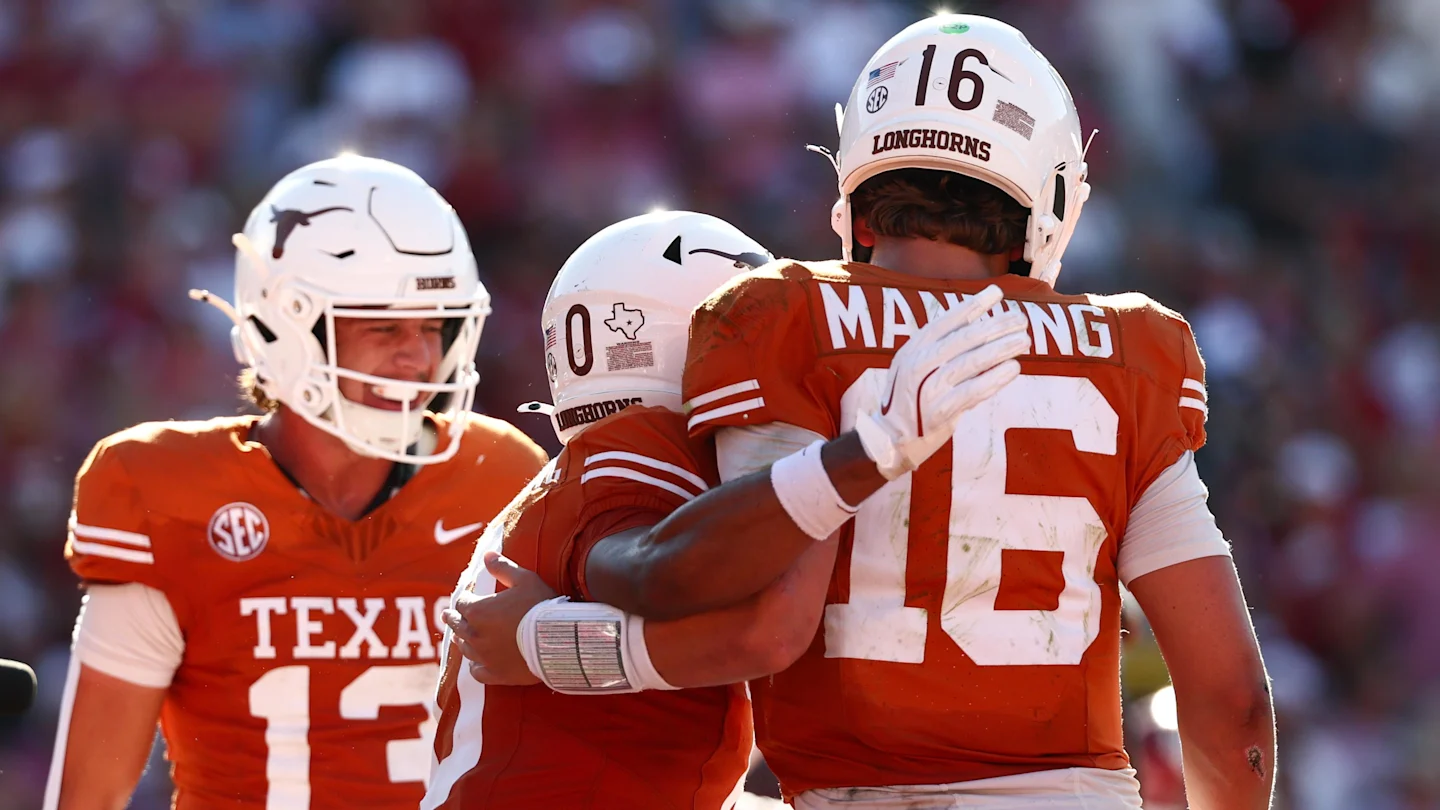
In today’s day and age of college football, the landscape of the sport has dramatically changed.
Now, instead of loyalty, coaches are forced to battle against the tampering of their best players in order to keep them from entering the portal for a big pay day.
And, as has been seen with USC and Texas A&M, players are also now announcing contract extensions to simply forgo that portal temptation, and stay with the school they are currently playing for.
Fortunately – and refreshingly – Texas Longhorns quarterback Arch Manning is taking a different approach.
According to reports from Inside Texas reporter Justin Wells, Manning is set to take a reduced payment from the Longhorns’ 2026 revenue-sharing pool in order to free up money to help his team both retain its own star players, as well as attack the transfer portal to improve the roster for a 2026 championship run.
A Tom Brady-Like Approach From Arch Manning

This move is eerily reminiscent of former NFL superstar Tom Brady, who was famous for taking pay cuts throughout his career in order to help his team acquire players in free agency in hopes of winning a championship.
Dallas Mavericks superstar Dirk Nowitzki also took a similar approach during his time in the NBA, helping Mark Cuban to add firepower to the roster by taking a massive pay cut.
The only difference is that this is college football, and in an era of a ‘look at me and my bank account’ mentality from the vast majority of college football, Manning’s selfless approach is a sight for sore eyes.
Manning Selfless Despite Elite Season
This is especially true considering the fact that Manning deservedly earned a major pay raise in his first season as the starter, completing 227 of 370 passes for 2,942 yards and 24 touchdowns with seven interceptions. He also rushed for 244 yards and led the Longhorns with eight rushing touchdowns, and had a receiving touchdown, accounting for 33 total scores for the season.
And, he was able to do all of that behind a leaky offensive line that ranked 67th in the country in pass blocking grade per PFF, while allowing 159 total pressures and 22 sacks – numbers that could have been much higher if Manning did not have such elite pocket presence and escapability. Not to mention, the offense being encumbered by the worst rushing attack the school had since 1944.
But instead of using that as leverage, like so many other players in the sport, Manning is giving Texas the Brady treatment – allowing them more money to dedicate towards NIL in the transfer portal in hopes of bringing in help to fix the team’s issues up front on the offensive line and in the running game, with potentially multiple additions at the running back spot.
Not to mention, it potentially allows Texas to make some major improvements at wide receiver, linebacker, and defensive back.
His decision also makes it much easier for Texas retain current players on the roster, who have no doubt been receiving tampering-level overtures from other schools and agents.
And it will be made possible in part thanks to a selfless act from Manning, who has now made he desire to win a national championship quite clear.
NIL
$54 million college football HC predicted to be candidate for high-profile NFL job
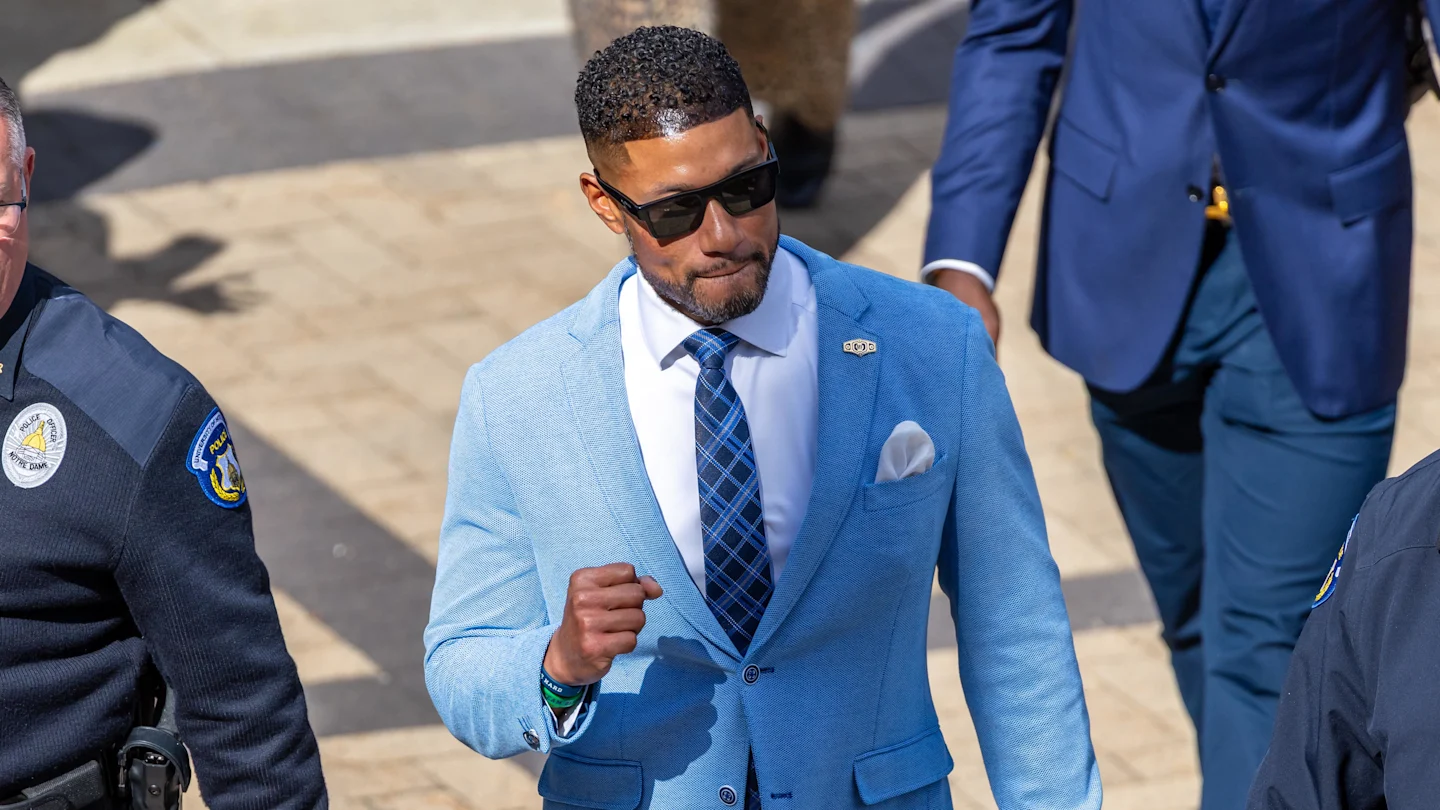
The college football coaching carousel spins on, but now some of that speculation includes one of the most prestigious positions in the NFL which came open this year, and a rising star in the NCAA is now being connected to the vacancy.
Notre Dame head coach Marcus Freeman is someone who should be considered in contention to become the next coach of the New York Giants franchise, according to college football analyst Josh Pate.
Freeman in play for the Giants?
“I just think Marcus Freeman is gonna be in play for the Giants job,” Pate said during an appearance with Bussin’ With The Boys.
“I think a lot of people in the college football administrative world know that/expect that. The agency world knows that/expects that. Not a done deal. I’m not going Schefter.
“If it’s even a remote possibility, and it certainly is, then that means the Notre Dame job may be open, as well. The coaching cycle is not close to done yet.”
NFL insiders seem to agree
The talk connecting Freeman to the Giants is not just random speculation at this point.
Freeman has also emerged as one of the most prominent names on the shortlist being assembled by the Giants franchise itself, according to The Athletic.
That is something to keep an eye on, as the NFL coaching bonanza is only just getting started, and Freeman is considered one of the best young coaching minds in circulation at any level.
LSU, Penn State, and Florida were all reportedly in communication with Freeman through his representatives when those schools were in the market for a coach, and the Giants could be next.
What Freeman has done at Notre Dame
Freeman has just completed his fourth season at the helm of the Fighting Irish program and boasts a 43-12 overall record, winning more than 78 percent of his games.
Freeman led Notre Dame to a No. 2 national ranking and an appearance in the national championship game against his alma mater a year ago.
His team went 10-2 this season and seemed poised for another berth in the College Football Playoff, before the committee reversed course on Selection Day and left the Irish out of the field, leading the school to decline playing in a bowl game.
What Notre Dame is giving Freeman
Freeman, who will turn 40 next month, signed a contract extension with Notre Dame last year that will lock him in with the school through the 2030 season, but if this carousel has proven anything, it’s that almost any contract can be gotten out of.
Notre Dame is a private school and is not obligated to publish its coaching salaries, but insiders contend his deal pays him $9 million per season and is worth a total of a reported $54 million.
But that raise is already somewhat out of date after Indiana recently inked Curt Cignetti to a new deal that will pay him $11.7 million per season.
The most recent reporting contends that Notre Dame and Freeman have not yet reworked his deal with the school, but that both sides are interested in coming to a new arrangement by the new year.
The faster they do that, the faster they can end talk of his leaving.
Read more from College Football HQ
NIL
The Cost of NIL

JACKSON, Miss. (WLBT) – Name, image, and likeness.
It has taken athletics across the amateur level by storm nationally, creating an avenue for players to make money from their NIL, particularly in football.
College football, most notably at the NCAA Division I level, has been forever changed because of it, with one SEC coach calling the state of CFB “sick.”
“We’re trying to sound warning bells. There’s a warning that the system that we are in really is sick right now, and college football is sick,” Missouri head football coach Eli Drinkwitz said about NIL on Monday, December 16, ahead of his team’s appearance in the Gator Bowl. “There’s showing signs of this cracking moving forward… Tampering is at the highest levels – there is no such thing as tampering, because there’s no one that’s been punished for tampering. Everybody on my roster is being called.”
In Mississippi, Ole Miss has benefited from its strong NIL movement, the Grove Collective, which is a large reason why the football program is hosting a College Football playoff game in the school’s first-ever appearance.
But how is NIL affecting high school student-athletes in Mississippi?
Thirty-six states in the country are allowing high school student-athletes to profit from their name, image, and likeness.
Mississippi is not one of them.
“NIL is not for high school students,” Rickey Neaves, the Executive Director of the Mississippi High School Activities Association, said. ”They’re much too young to be taking on that responsibility and handling that large sum of money. So, a high school student and our association need to concentrate on number one, being a young person and enjoying school, enjoying the high school experience, and just being a young man or a young lady. And then the rest of it will take care of itself later on. They’re going to have to work and be responsible later on in life, and long enough. So let them be young while they can.”
According to Yahoo Sports, Fazion Brandon, a five-star recruit playing high school football in North Carolina, is allegedly making $1.2 million in NIL money, who signed several highly publicized contracts since his lawsuit.
Tristen Keys, the highest-rated Mississippi recruit in the class of 2026 and a senior at Hattiesburg High School who signed to play CFB at Tennessee, has an NIL valuation of over $500k, according to On3 Sports.
While not naming the said student-athletes, Neaves confirmed that several Mississippi athletes have been approached every year with a large sum of money with NIL deals since its emergence.
$1.2 and $1.4 million to be exact.
These individuals likely played football in the state, with Mississippi consistently ranking in the top five, and even the best in the country in producing four and five-star talent on the gridiron, multiple reports show.
In fact, 12 high school student-athletes are ranked in ESPN’s Top 300 recruits in the nation, with 5 of them being ranked in the top 100.
That amount of money is hard to turn down for anyone, let alone a high school athlete with the opportunity to achieve dreams at the tip of their finger.
Neaves said turning this opportunity down has impacted a select few of student-athletes in the state.
However, there are ways around signing an NIL contract that can’t be accepted until they graduate and are enrolled in a university.
“They can sign an NIL contract. [But] they or their parents cannot receive any money or any goods that can be escrowed, as we call it, into a bank account for when they do graduate,” Neaves stated. “They cannot use their school logo, their school colors. It does not keep them from using their own name, their own image, and their own likeness, but all of that other belongs either to their school or even to the association, so they can’t use that.”
“We do encourage parents to look into that,” he continued. “I had a deal with a couple of student-athletes last year, and my advice to them was, you can’t tell a young man when they’re 17, 18 years old to turn down $1.2 million. What you can tell them is to be very careful, have that money escrowed and waiting on you once you use your eligibility or once you have graduated, and then build your own name, your own legacy, and build off of that.”
No local student-athletes, according to Neaves, have left the state to pursue NIL deals that are eligible to profit from while in high school.
While the NIL movement hasn’t made its way to high school athletics in the Magnolia State, Neaves suggests another entity is directly affecting high school athletics here.
The transfer portal.
It has changed the landscape of amateur athletics forever, with major colleges able to pay millions in NIL contracts for transfers arguably older and more ready-made for a football program – or any other athletics program, for that matter – to win immediately.
While there are no formal, large-scale academic studies that provide a precise, specific percentage of high schoolers affected, this in turn undoubtedly results in fewer roster spots and scholarship offers for talented high school recruits.
In 2023, an analysis done by Gene’s Page shows that SEC programs’ high school signees dipped nearly 11-percent between 2019 and 2021 as the portal gained prominence.
The FootballScoop stated in an article that in 2021, around 400 fewer players across the country signed FBS scholarships compared to the two cycles prior, and the trend has continued.
Neaves proposes that high school athletes in the state are impacted today.
“We need to look at what that is doing to our high school athletes,“ he warned. ”Right now, we have some outstanding high school athletes, both male and female, who are not getting the opportunity to go on to the next level because these people are still hanging around. They’re gaining some of the six and seven-year college athletes, and that’s not letting today’s seniors in the room. One of these days, NIL money is going to run out, and you have, you have juniors and seniors in college that are staying in college because they’re making more money off their NIL than they would make out of working.”
Is there a future for NIL in Mississippi high school sports?
For the possibility of NIL to maneuver its way into Mississippi high school sports, it would first have to start above the MHSAA.
Neaves doubled down that it is not in the picture within the rules of the association, but that “the legislature could pass a bylaw that says student athletes of high school age can do this.”
“If that ever happened, we would have to stay within the rules ourselves. So, we would have to allow it,“ he said. ”I personally hope that does not happen because I think we have the best option for both worlds here. The student athlete can still have [NIL deals] waiting on them when they get out of school at any time in their life, when they are more adapted to [the] use of it and can benefit from it even more.”
It does remain a possibility, however.
More states are trending towards allowing high schoolers to make NIL money.
On November 25, Ohio became the latest state to join the NIL movement.
While it is technically out of Neaves’ control, he does encourage that high school sports remain the same in Mississippi.
“You never know in today’s world what’s going to be coming down the pipe, but I think you have to always look ahead and see what pitfalls are out there.”
“Let’s be realistic. Is a 16 or 17-year-old mature enough to handle a million dollars? No. I know when I was that age, I would have blown it and probably ruined my whole career while doing it. Now, that’s not what everybody would do, but if that happens to one person, that’s one too many.”
Want more WLBT news in your inbox? Click here to subscribe to our newsletter.
See a spelling or grammar error in our story? Please click here to report it and include the headline of the story in your email.
Copyright 2025 WLBT. All rights reserved.
NIL
Arch Manning Is Taking A Pay Cut To Help Texas Gain An Edge
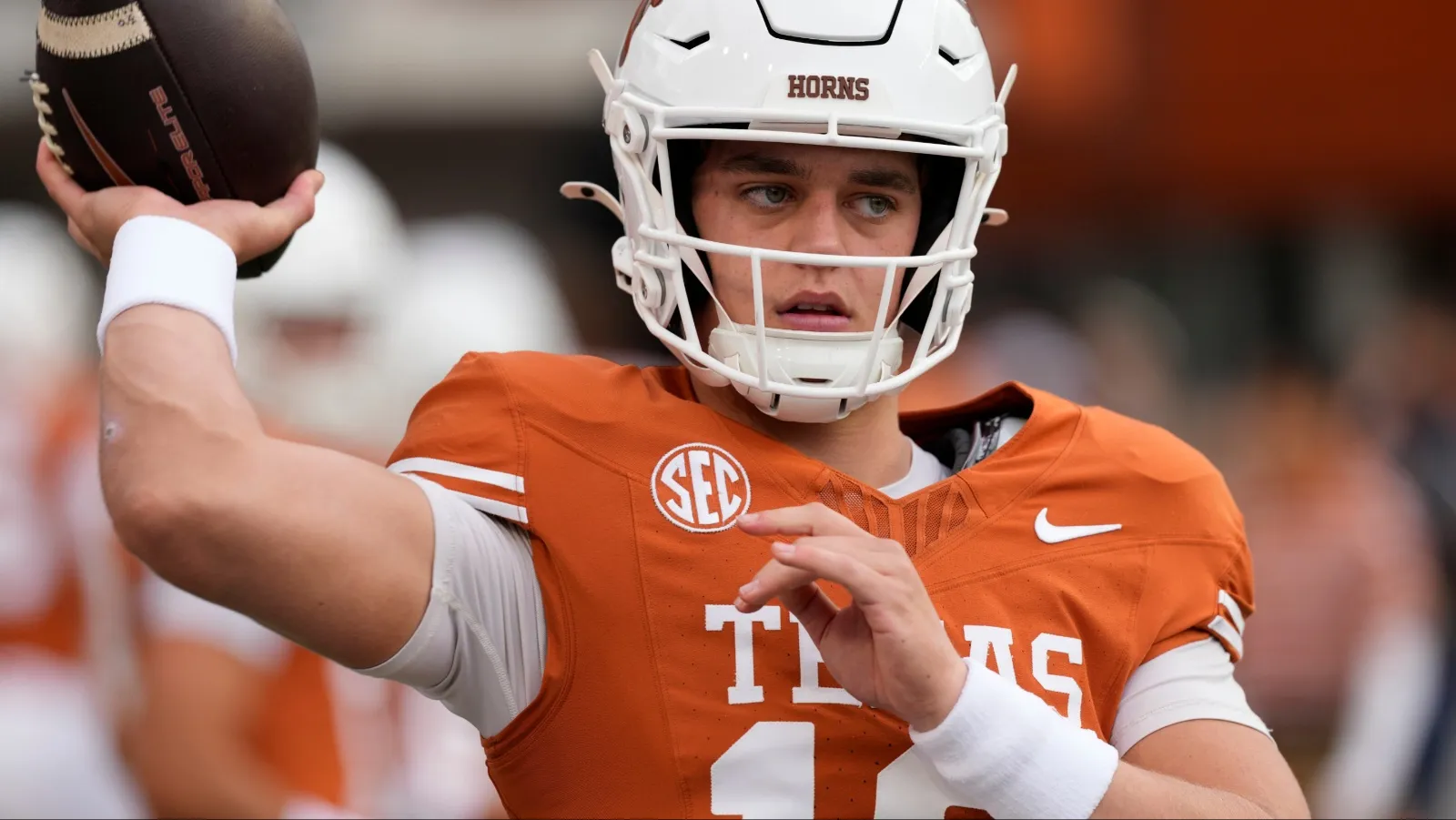
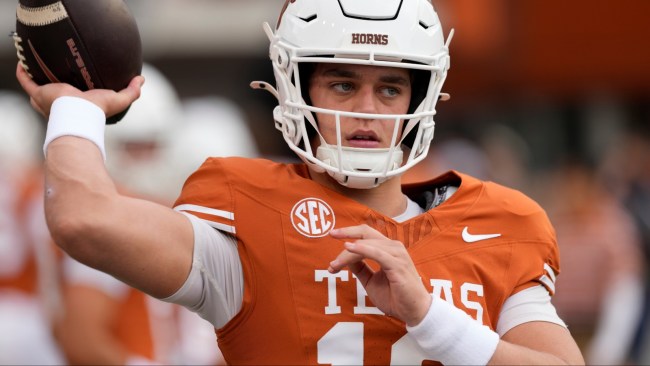
© Scott Wachter-Imagn Images
College football has been skidding down a slippery slope since the start of the NIL Era, and the line between that level and the pros gets blurrier with every year that passes. Now, we’ve been treated to our latest shift on that front courtesy of Arch Manning’s decision to take a pay cut ahead of his second season as the starter for Texas.
Next summer will mark the fifth anniversary of the landmark Supreme Court decision that essentially forced the NCAA to abandon its longstanding efforts to prevent students from cashing in on their name, image, and likeness.
It was a fairly inevitable development and one that was poised to have a dramatic impact on the landscape of college sports. While most fans agreed that student-athletes deserved to make some money, the ways in which they’re now able to do so have slowly but surely eroded the spirit of collegiate athletics as the concept of amateurism becomes a memory of the past.
That evolution has been marked by a number of tangible signposts, and the latest stake has been pounded into the ground courtesy of Arch Manning.
Arch Manning is taking a pay cut to allow Texas to use more of its House settlement funds on other talent
Earlier this week, we were treated to the latest piece of evidence that college football is basically a pro sport when USC went out of its way to announce running back Waymond Jordan had re-signed with the program after deciding to return to the Trojans for a second season.
We’ve reached a point where every player is effectively a free agent when their season comes to an end due to the transfer portal, and schools now have even more money they can use to try to poach and retain talent in the wake of the House settlement that will allow athletic departments to redistribute up to $20.5 million in revenue to athletes during the current academic year.
According to Texas Insider, the University of Texas is setting aside around $14 million for its football program next season. Arch Manning will undoubtedly receive a significant chunk of that sum, but the outlet spoke with sources who say the quarterback will accept “a reduced compensation” from the Longhorns so they can spend more money on other players in pursuit of a national championship.
Manning certainly isn’t hurting for cash, as he reportedly received at least $3.5 million this season thanks to NIL deals with companies including Red Bull, Uber, and Warby Parker.
It’s a commendable move for a QB who will be looking to improve after largely failing to meet the admittedly lofty expectations surrounding him during a campaign where the Longhorns went 9-3, but it’s also one that shows the sport has firmly reached the point of no return.
NIL
Texas QB asks for less NIL money to help boost roster

Updated Dec. 19, 2025, 10:54 a.m. CT
There are plenty of examples of a star in pro sports taking less money in order to help the overall roster. But it isn’t something that’s hit college football yet … until now, thanks to Arch Manning. Manning has asked to take a reduced portion of the Longhorns’ direct payout pool.
Manning’s aim at taking less NIL funds is to help improve the roster around him. Just like Patrick Mahomes, who regularly gives up millions to help the Kansas City Chief’s roster. Tom Brady did it with New England. Dirk Nowitzki, Tim Duncan, LeBron James, Kevin Durant, Jalen Brunson, Aaron Rodgers and Ben Roethlisberger have all helped the rosters around them by taking less.
In the pros, there are salary caps to negotiate. While college has no salary cap (yet), there is a finite amount in the NIL house pool. Texas can only spend what it has available. And while that pool is one of the biggest in the nation, Texas still follows a budget.
No doubt, Manning will be hoping the Texas coaching staff uses some of the freed up football revenue sharing funds on the offensive line. The line struggled in front of Manning all season and certainly inhibited his development early in the season.
Two offensive linemen are gone after the Citrus Bowl and Texas might lose a third. Left tackle Trevor Goosby was named first-team All-SEC is now contemplating going pro. Running back Jadan Baugh from Florida is also on Texas’ radar. The talented RB won’t be cheap.
Of course, it’s not like Manning will starve. The redshirt sophomore has one of the highest NIL valuations in nation. Manning has NIL deals with Red Bull, Panani, Uber and Warby Parker. Manning made north of $3.5 million in NIL deals in 2025, according to the Houston Chronicle.
With a big name that attracts major brands, Manning doesn’t need his big deals supplemented. But most college athletes are paid by the common pool of funds. Manning frees up some of that money for transfers.
NIL
College football’s highest-paid player takes a pay cut to chase 2026 championship

Much like the NBA in the 2010s, once the actual season ends for college football, the real drama begins off the field. Since the conclusion of the regular season, many players have already announced whether they’ll enter the transfer portal or re-sign NIL and rev-share deals with their current teams.
There is no real contract system set up for college athletics the way there is in professional sports, where deals can be signed for four or five years, binding both sides. In college football, every player is basically a free agent every offseason and has the power to re-negotiate their deal or enter the transfer portal if they can’t agree to terms with their school. However, perhaps the most famous athlete in all of college sports is now deciding to reduce his salary, not increase it, as he plans to return for 2026.
That would be Texas quarterback Arch Manning. According to Sporting News and On3, Manning entered the 2025 college football season as, reportedly, the highest-paid player in the entire sport. On3’s NIL valuation database had Manning as the highest-valued player in the country heading into the year, and despite some dips in play, Manning still remains No. 1 in On3’s NIL100 rating the top 100 highest-valued college athletes. His current value is listed at $5.3 million.

But according to a report that came out Friday morning, Manning actually will accept less money from Texas’ direct revenue share next season in an attempt to help the team better equip themselves for a 2026 national championship run after disappointing their CFP expectations in 2025. It’s important to note that Manning’s endorsement deals, nor money from any NIL collective, are impacted by this.
“Sources tell Inside Texas that star quarterback has agreed to a reduced compensation amount from Texas’ House settlement revenue sharing pool in 2026,” On3 ‘s Justin Wells published on Friday. “This ostensibly doesn’t affect his compensation from fair market NIL, commonly referred to by Texas administrators as ‘real NIL.’ Manning has partnerships with Warby Parker, Waymo, Vuori, and Red Bull and is one of the most high-profile college athletes regardless of sport.”
This move here is noble by Manning but also makes most sense for the team. As Wells mentioned above, Manning is heavily partnered with national brands and is the unique college athlete who brings his own marketability to the table, outside of his performance. This is a guy that can generate millions of dollars from endorsements and public partnerships — what Texas admins consider “real NIL.”
Essentially, Texas can guarantee Manning less raw money via the rev-share route but still assure him that he’ll get his money through other NIL means. Then, the Longhorns can take that guaranteed rev-share money and use it on high-level players who may not have the same name recognition or personal brand as Manning.
More on College Football HQ
-

 Motorsports1 week ago
Motorsports1 week agoSoundGear Named Entitlement Sponsor of Spears CARS Tour Southwest Opener
-

 NIL3 weeks ago
NIL3 weeks agoBowl Projections: ESPN predicts 12-team College Football Playoff bracket, full bowl slate after Week 14
-
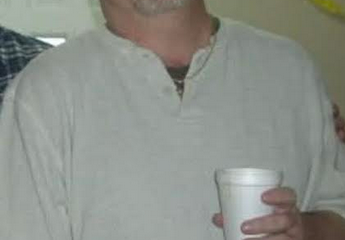
 Rec Sports3 weeks ago
Rec Sports3 weeks agoRobert “Bobby” Lewis Hardin, 56
-
Sports3 weeks ago
Wisconsin volleyball sweeps Minnesota with ease in ranked rivalry win
-

 Motorsports2 weeks ago
Motorsports2 weeks agoDonny Schatz finds new home for 2026, inks full-time deal with CJB Motorsports – InForum
-

 Rec Sports2 weeks ago
Rec Sports2 weeks agoHow Donald Trump became FIFA’s ‘soccer president’ long before World Cup draw
-
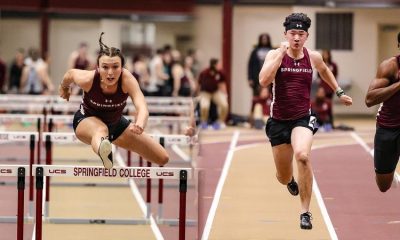
 Sports3 weeks ago
Sports3 weeks agoMen’s and Women’s Track and Field Release 2026 Indoor Schedule with Opener Slated for December 6 at Home
-

 Motorsports3 weeks ago
Motorsports3 weeks agoMichael Jordan’s fight against NASCAR heads to court, could shake up motorsports
-
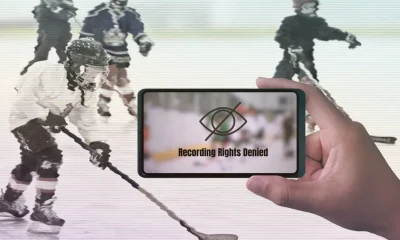
 Rec Sports2 weeks ago
Rec Sports2 weeks agoBlack Bear Revises Recording Policies After Rulebook Language Surfaces via Lever
-

 Rec Sports2 weeks ago
Rec Sports2 weeks agoDavid Blitzer, Harris Blitzer Sports & Entertainment

































